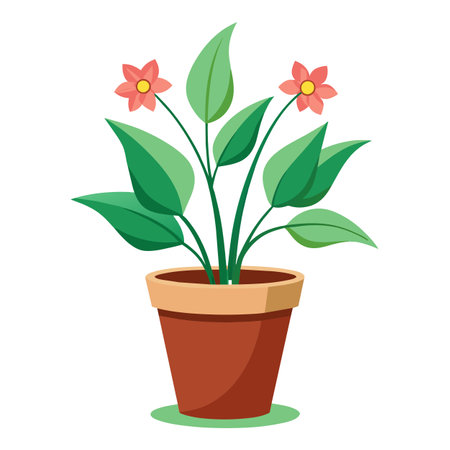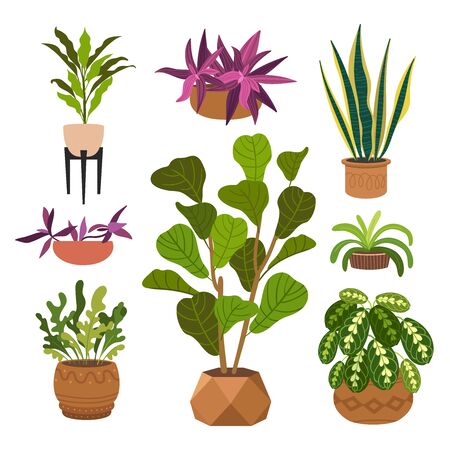1. Choosing the Right Herbs for Indoor Growing
Starting your own kitchen herb garden is easier than you think—especially when you choose herbs that naturally thrive indoors. Whether youre a seasoned home cook or just getting started, picking the right herbs based on your cooking habits and care preferences can make all the difference.
Best Herbs That Thrive Indoors
Some herbs grow better inside than others due to their light, temperature, and humidity needs. Here are some of the most popular and reliable choices for indoor herb gardening:
| Herb | Flavor Profile | Light Needs | Watering Needs |
|---|---|---|---|
| Basil | Sweet, peppery | 6+ hours of sunlight | Keep soil consistently moist |
| Parsley | Mild, slightly bitter | 4–6 hours of sunlight | Allow top inch of soil to dry out between watering |
| Mint | Cool, refreshing | Indirect light or partial sun | Keep soil evenly moist |
| Thyme | Earthy, lemony | 6+ hours of sunlight | Drought-tolerant; water when soil is dry |
| Chives | Mild onion flavor | Bright, indirect light | Water when top inch of soil feels dry |
Selecting Herbs Based on Your Cooking Style
Your personal cooking style can help guide your herb selections. Love Italian food? Basil, oregano, and parsley are must-haves. Big on Mexican cuisine? Consider growing cilantro and chives. For fans of Asian cooking, try Thai basil or lemongrass (note: lemongrass may need extra warmth and light).
Culinary Herb Pairing Suggestions:
| Cuisine Type | Suggested Herbs |
|---|---|
| Italian | Basil, Oregano, Parsley, Thyme |
| Mexican | Cilantro, Chives, Oregano (Mexican variety) |
| Mediterranean | Sage, Rosemary, Thyme, Mint |
| Asian | Thai Basil, Lemongrass*, Mint (*may require grow lights) |
Group Herbs with Similar Care Needs
To make caring for your indoor herb garden easier, group herbs with similar water and light requirements together. This helps ensure each plant gets what it needs without over- or under-watering.
Example Groupings:
- Drought-Tolerant Group: Rosemary, Thyme, Oregano – Need full sun and infrequent watering.
- Moisture-Loving Group: Basil, Mint, Parsley – Prefer more frequent watering and moderate to bright light.
- Shade-Tolerant Group: Chives, Mint – Can tolerate less direct sunlight.
Selecting the right herbs at the beginning helps set you up for success. Once youve picked your favorites based on growing conditions and cooking preferences, youre ready to move on to setting up your space!
2. Finding the Ideal Location in Your Home
Choosing the right spot for your indoor kitchen herb garden is key to keeping your herbs happy and thriving. Since most herbs love sunlight, warmth, and good airflow, you’ll want to find a place in your home that checks all those boxes.
Sunlight: The More, the Better
Herbs like basil, thyme, parsley, and rosemary need plenty of sunlight—ideally 6 to 8 hours of direct light each day. South-facing windows are usually your best bet because they get the most consistent sun throughout the day. If you don’t have a sunny window, don’t worry! A grow light can be a great substitute.
Best Windows for Sunlight
| Window Direction | Sunlight Level | Recommended? |
|---|---|---|
| South-facing | Full sun (best) | Yes ✅ |
| West-facing | Afternoon sun | Yes ✅ |
| East-facing | Morning sun | Moderate ✅ |
| North-facing | Low light | No ❌ (unless using grow lights) |
Temperature: Keep It Cozy
Your herbs will do best in temperatures between 65°F and 75°F during the day. Avoid placing them near cold drafts or heating vents. Sudden changes in temperature can stress your plants and slow their growth.
Airflow: Let It Breathe
A little air movement helps prevent mold and keeps your herbs strong. Don’t put your pots too close together—give them space to breathe. If your home feels stuffy, consider turning on a fan nearby every once in a while to keep the air moving gently.
A Quick Checklist for Choosing the Right Spot:
- A south- or west-facing window with at least 6 hours of sun per day 🌞
- A room that stays between 65°F–75°F 🌡️
- A space away from drafts, AC units, or heaters 🚫❄️🔥
- A place with some air circulation 💨
- An area close to your kitchen for easy access while cooking 🍳🌿
Once you’ve found the perfect location, you’re well on your way to creating a thriving indoor herb garden that looks great and makes dinner taste even better!

3. Selecting Containers and Potting Mix
Choosing the right containers and potting mix is key to growing healthy herbs indoors. The right pot not only supports your plants growth but also adds a touch of style to your kitchen. Heres what you need to know when picking out pots and soil for your kitchen herb garden.
Best Types of Containers for Indoor Herbs
Drainage is the most important factor when selecting containers. Herbs don’t like sitting in water, so make sure your pots have drainage holes at the bottom. If you love decorative planters that don’t have holes, consider using them as outer pots—place a plastic nursery pot with holes inside them.
Popular Container Options
| Type of Container | Pros | Cons |
|---|---|---|
| Terra Cotta Pots | Great airflow, classic look | Dries out quickly, can crack in cold weather |
| Ceramic Pots (with drainage) | Stylish, available in many colors | Heavier, usually more expensive |
| Plastic Pots | Lightweight, inexpensive, retains moisture well | Not as breathable as clay or ceramic |
| Metal Containers (with liner) | Modern look, durable | Can heat up fast, may rust without liner |
Selecting the Right Potting Mix
A high-quality potting mix makes all the difference for indoor herbs. Avoid using garden soil—it’s too heavy and may carry pests or diseases. Instead, go for a light, well-draining mix specifically labeled for indoor use or container gardening.
What to Look For in Potting Mix
- Good Drainage: Look for mixes that contain perlite or vermiculite to improve airflow and prevent soggy roots.
- Nutrient-Rich: Some potting mixes come pre-fertilized to give your herbs a good start.
- Pest-Free: Choose sterile mixes to avoid fungus gnats and other pests common in indoor settings.
If youre growing different types of herbs together in one container, make sure they all have similar watering and light needs. This helps keep care simple and ensures each plant thrives.
Quick Tip:
If youre unsure about which potting mix to buy, look for one labeled “indoor container mix” or “herb garden mix” at your local garden center or hardware store.
Selecting the right containers and soil sets the foundation for a successful indoor herb garden. With proper drainage and nutrient-rich potting mix, your kitchen herbs will grow strong and flavorful—ready whenever you need them!
4. Planting and Basic Care Tips
Once youve selected your herbs and containers, its time to get planting! Heres a simple step-by-step guide to help you start your indoor kitchen herb garden, along with easy care tips to keep your herbs healthy and thriving.
Step-by-Step Instructions for Planting Herbs
- Fill your pots with soil: Use a high-quality potting mix designed for indoor plants. Fill each container about three-quarters full.
- Moisten the soil: Lightly water the soil before planting to create a damp (not soggy) environment for the roots.
- Plant your herbs: If using seeds, follow the instructions on the packet for depth and spacing. If using starter plants, gently remove them from their nursery pots and loosen the roots before placing them in the new container.
- Add more soil: Once the herbs are in place, fill in around them with extra potting mix, pressing down lightly to remove air pockets.
- Water thoroughly: Give your newly planted herbs a good drink of water to help them settle in.
Watering Tips
Overwatering is one of the most common mistakes with indoor herb gardens. Here’s how to get it right:
| Herb | Watering Frequency | Notes |
|---|---|---|
| Basil | Every 2–3 days | Loves moist soil but not soggy; wilts quickly if too dry |
| Rosemary | Once a week | Prefers dry conditions; avoid overwatering |
| Mint | Every 2–3 days | Keeps growing fast with consistent moisture |
| Thyme | Every 4–5 days | Tolerates dry soil well; don’t water too often |
Pruning Your Herbs
Regular pruning encourages bushier growth and prevents herbs from becoming leggy. Always use clean scissors or garden shears, and cut just above a leaf node (where leaves grow from the stem). Heres when to prune:
- Basil: Start pruning once it has at least six leaves. Remove flower buds promptly to extend its life.
- Mint: Trim frequently to prevent overgrowth. It rebounds quickly after cutting.
- Parsley: Cut stems from the outside first, near the base of the plant.
- Cilantro: Prune weekly to delay bolting (flowering).
Feeding Your Indoor Herb Garden
Your herbs will need some nutrients to stay strong indoors. A general-purpose liquid fertilizer diluted to half strength works well. Feed them every few weeks during active growth (spring through fall), and reduce feeding in winter when growth slows down.
Fertilizer Schedule Example:
| Month | Feeding Frequency |
|---|---|
| March – September | Every 2–4 weeks |
| October – February | No feeding or once every 6–8 weeks if needed |
Caring for your kitchen herb garden doesnt have to be complicated. With regular attention and these basic practices, youll have fresh herbs ready for cooking any time of year!
5. Harvesting and Using Your Homegrown Herbs
One of the most rewarding parts of growing your own kitchen herb garden is finally getting to enjoy the fresh flavors in your meals. Knowing when and how to harvest herbs can make a big difference in taste and plant health. Heres how you can get the most out of your indoor herb garden.
When to Harvest Your Herbs
The best time to harvest herbs is right before they start flowering. This is when their flavor and essential oils are at their peak. For most herbs, this means harvesting regularly throughout the growing season to encourage new growth and prevent flowering.
| Herb | Best Time to Harvest |
|---|---|
| Basil | When the plant has 6-8 leaves; pick before it flowers |
| Mint | Just before it blooms; trim regularly for bushy growth |
| Parsley | Once stems have three segments; snip outer stems first |
| Thyme | Before flowering; use scissors to trim sprigs |
| Rosemary | Any time, but avoid cutting more than 1/3 of the plant |
How to Harvest Herbs Properly
You’ll want to use clean scissors or garden shears to snip off stems or leaves—never tear with your hands, as this can damage the plant. Always cut just above a leaf node (where leaves grow from the stem) to encourage branching and fuller growth.
A Few Quick Tips:
- Harvest in the morning after dew dries but before the sun gets too hot.
- Avoid taking more than one-third of the plant at once.
- If youre drying herbs, hang them upside down in small bunches in a dark, well-ventilated space.
Culinary Uses for Your Fresh Herbs
Your homegrown herbs can take everyday cooking to the next level. Here are some simple ways to use them:
- Basil: Add fresh basil to pasta dishes, caprese salads, or blend into homemade pesto.
- Mint: Perfect for mojitos, iced tea, or adding freshness to fruit salads.
- Thyme & Rosemary: Great for seasoning roasted vegetables, meats, and soups.
- Parsley: Use as a garnish or mix into tabbouleh and sauces for added brightness.
Create DIY Herb Projects at Home
If you find yourself with extra herbs, try using them beyond the kitchen. Here are some creative DIY ideas:
- Dried Herb Sachets: Fill small fabric bags with dried lavender, mint, or rosemary for natural drawer fresheners.
- Sugar & Salt Infusions: Mix dried herbs into sugar or salt for custom seasoning blends or baking accents.
- Spa Treatments: Add herbs like mint and rosemary to bathwater or make your own herbal face steam.


